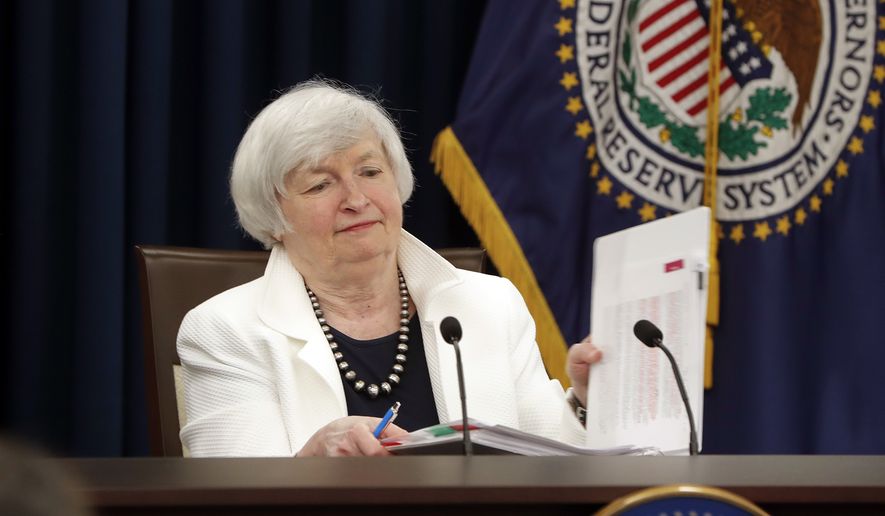OPINION:
The Federal Reserve has been absolutely flummoxed that inflation has stayed so low for so long. Gasoline prices and headline inflation may be getting a temporary jolt from Harvey, but core inflation — consumer prices less energy and food costs — remains well below the Fed’s official target of 2 percent.
Economists — including the elves at the Fed — adhere to two theories of inflation, and both have failed real-world tests miserably.
The Quantity Theory of Money predicted that the $4 billion the Fed printed to buy Treasury and mortgage-backed securities in the wake of the financial crisis should have pushed prices quite a bit by now. Stocks and housing prices have surged, but asset values have mostly recovered from financial crisis lows and overall consumer inflation has been tame.
According to the Phillips Curve, inflation should increase as unemployment falls. All the major indicators of the latter are down and employers are posting record job vacancies, but annual wage gains remain stuck at 2.5 percent. Factoring in annual productivity growth at even 1 percent, and inflation is limited to less than 2 percent.
Here are five reasons those theories have proved to be flawed.
First, many of those help wanted signs are for low-paying jobs in restaurants and other consumer services. The surge in health insurance premiums, copays and the like are squeezing family budgets for discretionary items, and those establishments have to hold the line on prices or customers will find alternatives — for example, purchasing more pre-prepared meals at supermarkets.
Businesses must come up with strategies to do more with the staff on hand — better managing work schedules to accommodate traffic surges, computerizing work and robots — and that’s one reason for the increase in part-time work.
Second, the changing structure of the U.S. economy — greater dependence on domestic energy and the technology sector for growth — and globalization have left the U.S. economy with much underutilized factory, utility and commercial space.
Absent a hurricane disruption for pipelines and refineries, when oil prices surge above $50 a barrel, shale producers rush to drill more. Easy credit in the oil patch has actually permitted operators to keep pumping after booking persistent losses.
Third, the technology sector, unlike old-line manufacturing, is much less likely to hit more than temporary bottlenecks. It uses fewer buildings and machines to create value — software and autos both require lots of research and development but making more copies of a new app does not require the same capital investment as meeting increased demand for GM pickups.
Fourth, Amazon and other internet aggregators and free smartphone apps make it much easier for consumers to compare prices and push down distribution costs and retail markups for many household items and business necessities. With their share of retail at only 9.7 percent but growing, that downward pressure on inflation is not likely to abate soon.
Finally, consumers, who do nearly 70 percent of the spending in the U.S. economy, are much less likely to rise to the bait of easy credit these days. Although auto and student loans have risen sharply during the recovery, overall household debt as a share of gross domestic product (which includes mortgages) has trended down and shows no sign of recovering to pre-recession levels.
Federal Reserve officials endlessly obsess that inflation below 2 percent will smooth the recovery. With core inflation at only 1.7 percent, prices for many goods such as clothing and cars are actually falling. Economists fear that could prompt layoffs and a recession, but the experience of the last several years indicates businesses find other ways to cope and the economy has kept on growing.
If the last few years have taught us anything, it is that the Fed can’t boost inflation or economic growth with cheap credit, and low inflation poses no real threat to prosperity.
The Fed should continue the process begun in December 2015 of gradually raising interest rates and sell off, as long anticipated, some of its huge holdings of Treasury and mortgage-backed securities.
The Fed should abandon its 2 percent inflation target and just be prepared to step in if some kind of disruptive phenomenon — like a conflict big enough to shut down Middle East oil or a showdown with North Korea that disrupts Asian supply chains — throws the recovery off course.
• Peter Morici is an economist and business professor at the University of Maryland, and a national columnist.




Please read our comment policy before commenting.